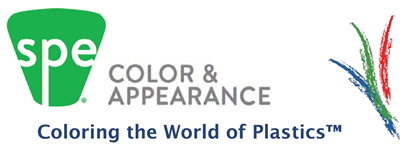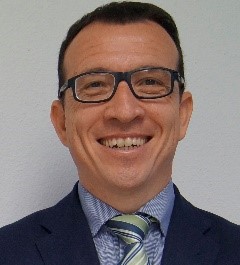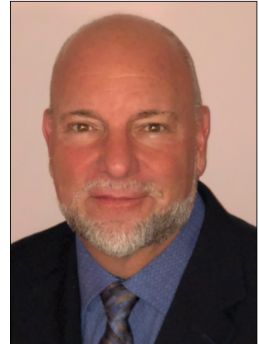Speaker Information
Bonnie Piro
Technical Service and Marketing Manager, Sudarshan
BS Chemical Engineering (1989), MS Engineering Management (1992) – Drexel University
I have been with Sudarshan for 3 ⅟2 years and one of my focus areas is the expansion of use of Sudarshan micas in the plastic applications – product introduction, product development and training. In addition, I support the technical needs of all the US plastic customers. Prior to Sudarshan, I was with Axalta Coating Systems (formally DuPont) for 30 years and all that time was in the pigment/colorant area.
Mica: Technology Impacts on Color Design for Plastics
Andrew Yankosky
Sun Chemical, Plastics Technical Service Group
Bachelor’s Degree, Chemistry
Andrew graduated from the University of Cincinnati with a Bachelor degree in Chemistry. He worked in EH&S for UC Engineering before joining Sun Chemical in the Plastics Technical Service Group. Andrew has been an SPE member for 3 years and this is his second RETEC conference.
Pigment Lightfastness – A Comparison of Fluorescent Bulb (Fluorescent Deluxe Daylight) and Light Emitting Diode Array (LED) Exposure
Andy Francis
Q-Lab
UV-C Durability Testing of Plastics
Abstract: UVC lamp technology has been in use for decades to disinfect air, water, and solid surfaces. DNA and RNA chemically break down under exposure to UVC energy, which makes it a very effective tool for deactivating viruses, bacteria, and mold spores, in a process called ultraviolet germicidal irradiation (UVGI). Interest in UVC technology increased sharply in 2020 as a result of the COVID-19 pandemic. UVGI devices have become increasingly popular for disinfecting rooms and other surfaces in medical facilities, aircraft, and public transportation vehicles. Other UVGI systems are being used in HVAC (heating, ventilation, air conditioning) systems or special light fixtures to reduce pathogen concentrations in indoor air.
This increased use of UVC light raises the question of what it does to synthetic materials such as plastics. Testing is required to understand how commercial, transportation, and personal protective equipment (PPE) materials will degrade when exposed to repeated UVGI cleaning cycles. UVA and UVB light is known well to cause damage to a range of materials, and UVC irradiance consists of even higher-energy photons, so this is a very relevant topic. This presentation will discuss some guidelines for UVC testing, although very few international standards exist yet for materials durability testing with UVC light. Results will be presented from UVC light exposure testing of several different types of materials, including automotive plastics, interior fabrics, and safety gear. These materials have previously been tested extensively for their UVA and UVB resistance in natural environments, but results are significantly different for even relatively short exposure to UVC light.
Brent Johnson
Development Chemist, Milliken and Co.
BS Chemistry, Wofford College
Brent Johnson is a Development Chemist with Milliken and Company with over 10 years of experience in the colorants industry. He holds a BS in Chemistry from Wofford College, and has had roles in production, quality, and development of dyes, pigments, and polymeric colorants. He specializes in analytical and process chemistry and uses these skills to support development and standardization of high quality colorants for multiple industries. In his free time, Brent enjoys spending time with his family and volunteering with his church and local non-profit organizations.
Understanding and Improving Color
Thomas R. Maier, Ph D
Chief Technology Officer, Monolith Materials
B.S., M.S., and Ph.D. – Macromolecular Science and Engineering, Case Western
JD – Case Western
M.B.A. – Finance and Strategic Management, The Wharton School, University of Pennsylvania
Licensed Ohio and U.S. patent attorney
Monolith Materials produces an environmentally friendly carbon black from methane with almost zero emissions of CO2, SOx, and NOx. Monolith’s plasma black has been found to be equivalent in plastics applications. Dispersion and compounding properties were studied in HDPE, PP, Nylon, and several other thermoplastic polymer systems. High loading masterbatches were prepared and let down. Dispersion, DMA, izod impact, flex, tensile properties, resistivity, tint, jetness and other properties were studied. Essentially no differences could be found between plasma carbon black produced by Monolith Materials compared to furnace black produced by an incumbent.
The New Plasma Black: Performance and Environmental Benefit
Alex Capuz
Color Solutions Business Manager, Ferro North America
Chemical Engineering D, Institut Químic de Sarrià (Barcelona, Spain)
MBA, ESADE Business School (Barcelona, Spain)
Alex Capuz started his professional career as a researcher in the R&D department of Uriach, a leading pharmaceutical lab in Spain. 3 years later he moved to the Surface Sciences Division of Huntsman International, where he occupied several Sales&Marketing posts for 5 years until becoming European Market Manager for Industrial markets. He joined Nubiola in June 2003 to become the Global Product Manager of Ultramarine Pigments and, later on, Global Marketing Manager too. After the acquisition of Nubiola by Ferro Corporation in July of 2015 he was appointed Marketing Manager for Ferro’s Pigments business in EMEA. January 2018 he relocated to Ferro’s HQ in Mayfield Heights, OH to lead the North America Dispersions & Colorants business as Business Manager, in combination with his role as Global Marketing Manager for Pigments. January 2020 he added the Pigments business under his responsibilities and became the Color Solutions Business Manager of Ferro North America. He is also former Chairman and member of the Board of SPE (Society of Plastics Engineers)’s Additives&Color Europe Division and Academic Collaborator for B2B Marketing programs in ESADE Business School (Barcelona, Spain).
Leveraging Pigments’ NIR Reflecting Properties to Overcome the Challenge of Sorting Recyclable Black Plastics
Regional Technical Marketing Manager, Americas Clariant Corporation, BU Additives, BL Advanced Surface Solutions
Frank Neuber began his career as an analytical chemist nearly thirty years ago at the MA Hanna (now part of Avient) Corporate Technical Center in Coral Springs, Florida. After designing the new analytical lab for the transfer of the Coral Springs facility to Suwanee, Georgia and managing the analytical lab projects in Suwanee, he was offered the opportunity to manage the lab and pilot line at Bayshore Industrial in LaPorte, Texas (then bought by A. Schulman/ LyondellBasell, now part of Ingenia, since March 2020). For the past 20+ years, he has worked for Clariant Corporation, with 16 years at Clariant Masterbatches (now Avient) in various developmental, technical service and managerial roles. He has been enjoying the last 4+ years re-uniting with old friends and acquaintances, now as clients, supporting Clariant Additives BL AS growth in the Americas as the Regional Technical Marketing Manager-Americas, along with his work with the teams in Europe and Asia developing new products and finding new ways to improve polymer processing. He is especially proud to be a part of Clariant’s introduction of the new non-food-competing, bio-derived, fully sustainable Licocare® RBW Vita products.
Improved Pigment Dispersion to Reduce Cost and Improve Physicals of Engineering Plastics Using Licocare RBW waxes, from 100% Sustainable Sources
Bismuth Vanadate for Plastics
Abstract: Bismuth Vanadate, Pigment Yellow 184 was introduced as an inorganic pigment in the mid 1980’s. Its usage and value plastics has grown; however, I believe Pigment Yellow 184 is often overlooked as a candidate for a high-performance Yellow in Plastics. BV can be used in a wide range of polymers including PVC, Polyolefins, and various Engineering resins. I will discuss both the benefits and limitations with regard to BV’s for plastics. The points to be referenced will include Heat Stability, possible oxidation or redox reaction, color shift, dispersibility, shade range, opacity, and variations of Pigment Yellow 184 that make it more suitable for select polymers.








